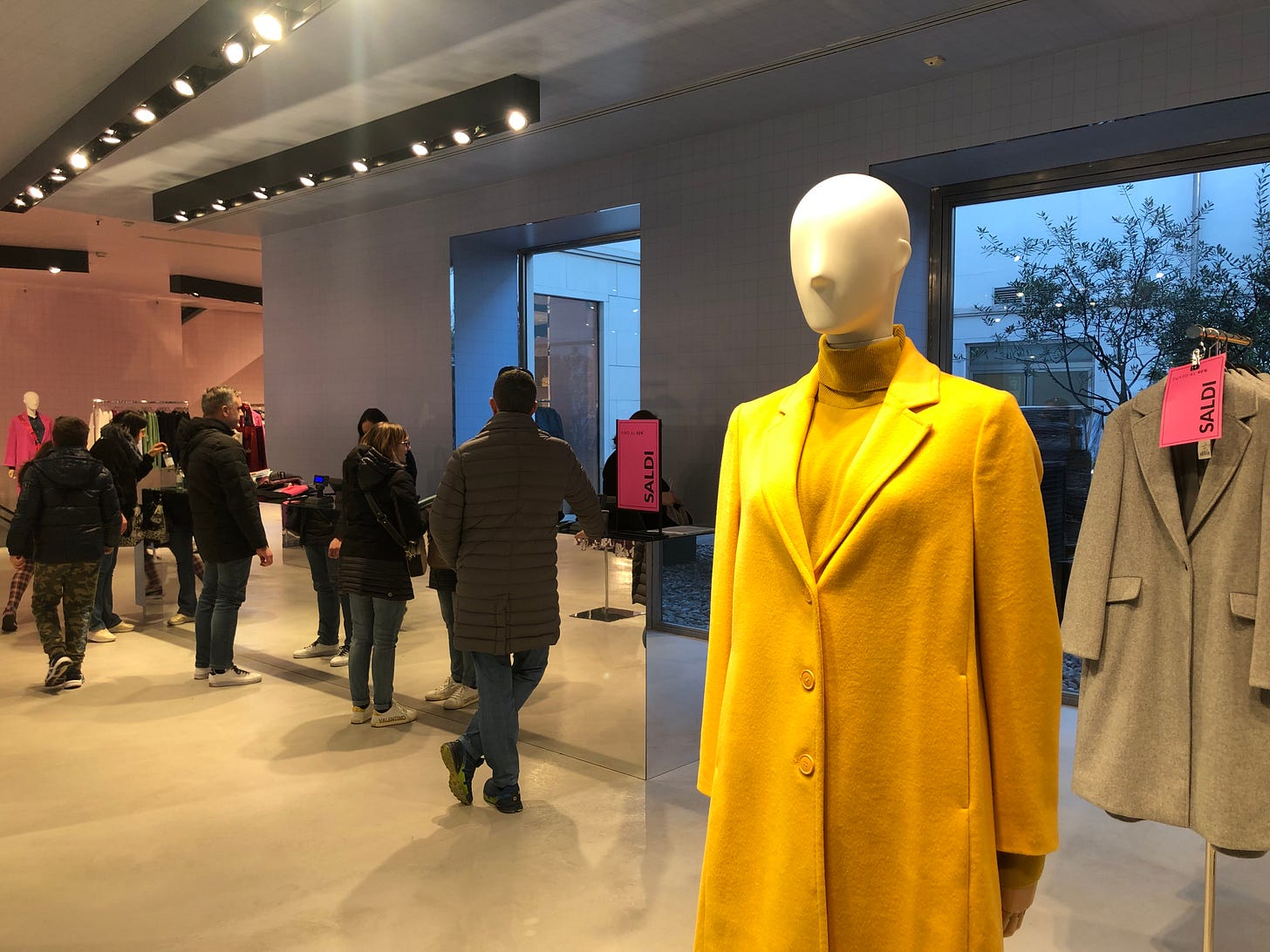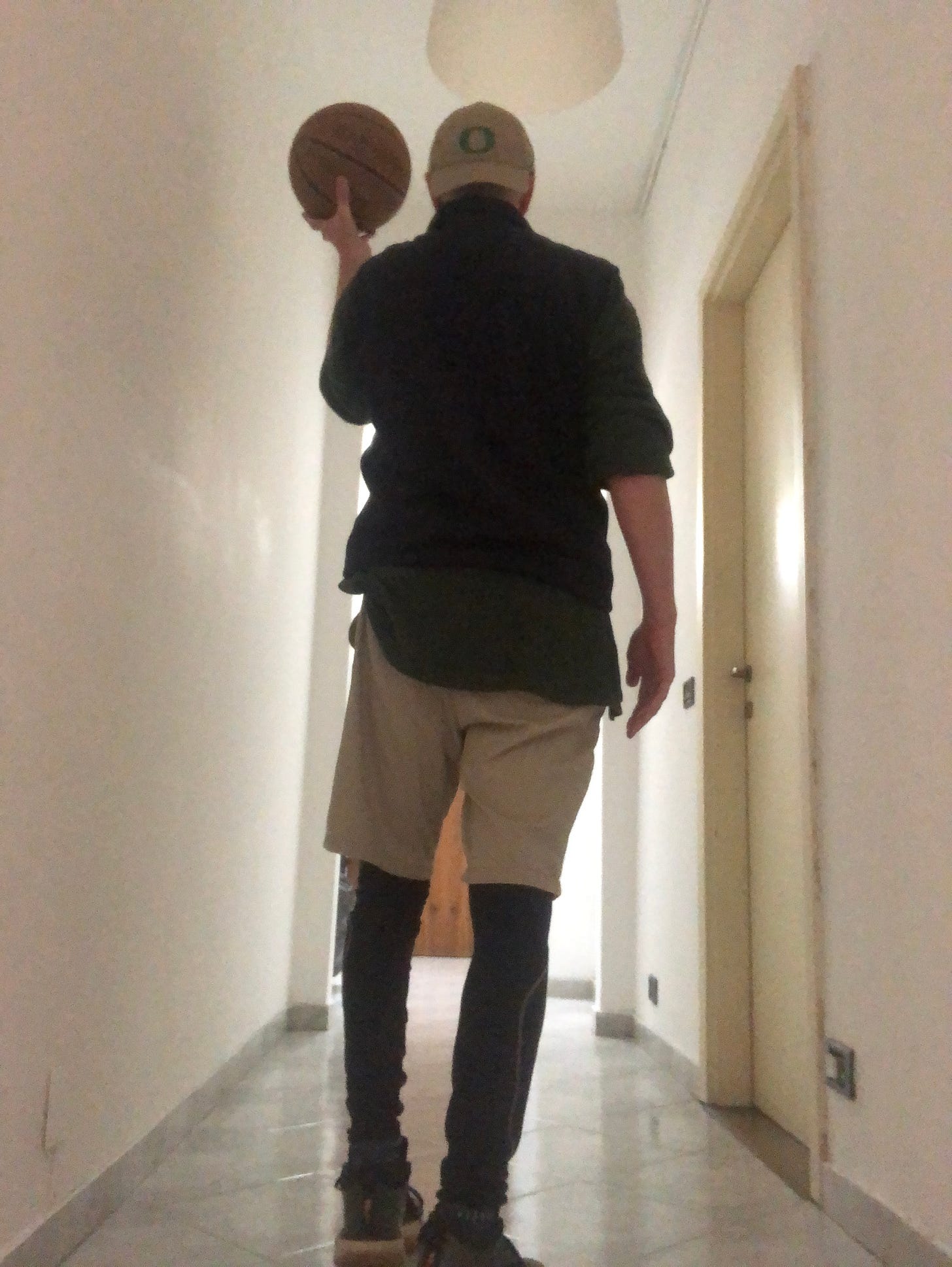Milan, Italy: where teens’ curls woo and sports jerseys are a no-no
Clothing brand stores like Benneton give a chance at dressing à la mode, with hair preoccupying young men.
Just off the high-speed train from Naples, a woman’s garb and accessories check off Milan’s fashion code: high-heel black leather boots, tight-hugging dress, fluffy fur-collar jacket, vintage leather cap, shopper’s bag of high-end Ishué clothing brand, and pink-and-baby blue trolly suitcase.
A few cities have all the marbles.
Unlike Paris, Milan is especially recognized around the globe for one head-turning feature:
Fashion.
“La moda Italiana” is a mode to woo passers-by at discos, in corporate offices, within train stations or through academic hallways. It doesn’t matter where you are as long as you got vogue.
Being hip in Milan knows no age.
Hair is a good place to start as this week marks the completion of Milan’s winter sales period, when clipped-out shoppers grab high-quality shirts and pants from shelves, with prices slashed as much as 50 percent.
Right-on threads and the latest in hair styles make for cool cats in the city’s most popular mainstream shopping districts: Corso Buenos Aires, Via Torino, and Corso Vittorio Emanuele, near the city’s cathedral, Duomo. Around the corner is Via Monte Napoleone, where luxury-brand clothing from the likes of Armani and Prada is snapped up if a customer’s pockets are loaded.
At times, the Milanese obsession with fashion borders on vanity. An American who grew up with baseball caps and bowl cuts can tell the difference between the two countries’ respective attire and hairlines. In Milan, going without a cap invites February colds, but nobody can sneeze at your hairdo.
In the USA? Sure, hair counts when the prom and job interviews near, but so do ball caps and sports jerseys among guys on the town. In Italy, team-affiliated apparel is generally worn only on game day.
In Milan, the quest for chic cuts begins early, when teens are transitioning to high school, ripe territory for peer pressure. Around age 15, some boys’ bangs blossom into wavy tufts, requiring multiple trips to the hairdresser, where curly frontal clumps are fashioned.
Francesca Ronsisvalle, a mother of two daughters, has a friend whose son’s 15th birthday wish was a haircut à la mode.
“It’s quite strange,” said Ronsisvalle, 34, a Milan resident who works at a financial institution. “All (the boy’s) friends have curls. It’s something very important for them.”
If a young man here is not genetically blessed with natural curls, she explained, the coiffure sees to a “permanent,” applying chemicals to forehead hair.
Hello, tuft, here you come.
“It’s something teenagers in our city like,” Ronsisvalle said. “It’s a trend. All the boys in his school have curls or use gel.”
Social media images of young men, as well as extravagant hairstyles of Serie-A soccer players, she suspects, are at play.
Fourth-year high-school school student Andrea Marzano of Milan.
A young man in Crema, an hour southeast of Milan.
“We have access to lots of types of social media, spreading certain stereotypes and trends among teenagers,” she says. “More and more (teens) are trying to look like the others.”
Sporting a gelled-up manicured cut, Frenchman Olivier Giroud captains AC Milan, the defending Serie-A soccer champions.
Maybe Milanese teens are ahead of the curve. My sophomore year, a Sandy (Ore.) High School classmate named Pam Dimmick gently asked me in Mr. Page’s psychology class: “Dave, who cuts your hair?” It was a hint to get with program and relieve Mom of clipper duty. From then on, the barbershop it would be, with a girl jump starting me, naturally.
Across two decades working as an English teacher in Milan, I have witnessed students grow from boys into men, when they pass from middle school to high school, through college, and on to respectable corporate careers. Marco Baldanza, for example, works abroad at Tommy Hilfiger, one of the few American clothing brands well recognized in Milan.
Nearly all those students had one thing in common as teens: hip hair.
Marco Verga, 28, of Milan, with tinted wavering locks.
Gel, blow-dryers and hairdresser visits maintain a fashionable cut, seen here on the shores of Lago Maggiore during a pizza break.
Nicolò of Biella relies on gel.
Though catchy cuts stay with Italian men through their 20’s, full-time jobs and fatherhood introduce a new reality: The value to hair-styling begins to recede, taking a backseat to decently priced clothing, found at dozens of Italian clothing-brand chains across the city.
United Colors of Benetton, the store in green, is one. It’s not high-end luxury but is well respected among Italians who are picky about what they wear. Widely popular in north Italy, its clothes are by no means cheaply priced, but selective shopping during the traditional sales periods of July and January can turn up bargains, when €25 is shelled out instead of €50 for either a nice pair of pants or a dress shirt.
The women’s section—with jackets, sweaters, scarves and dresses—is priced similarly.
“I do like Benetton, absolutely,” said Ronsisvalle, who appreciates the brand’s simple color couture, often one tone for each garment rather than a mix. “I think it’s classical, and it fits in a good way. Normally, this brand uses color, but the style of trousers and T-shirts are not so eccentric.”
Corso Buenos Aires, a mile and a half north of Duomo, sees shoppers of all age groups.
In Italy, scarves complement jackets and are popular among men. OVS, an Italian clothing store, competes for shoppers on Corso Buenos Aires.
Benetton’s cashiers see a steady stream of customers during sales, written on pink.
In Italy, a fine line separates the outlandish from the classy. In the United States, anything goes on the street and within many a private venue.
Private English lessons in Milan with one of Italy’s most famous plastic surgeons—he will go unnamed—revolved around a myriad of topics, including Las Vegas, which the doctor had visited on holiday one summer.
The well-to-do surgeon and his wife dressed up for a night on the Strip, strolling into a casino’s auditorium where they would take in a musical performance. He wore a proper dress jacket and tie, she an evening gown.
They looked around. What’s this? They were surrounded by slovenly outfitted Americans, men in cargo-esque shorts, collarless T-shirts, and sandals. The women were not far off, with tasteful dresses a minority among the crowd.
The senior doctor, legs crossed while seated in a wingback armchair and dressed in his usual tweed jacket, bluntly told me:
“Your people dress like savages.”
***
Milan, like any big city, has folks who are concerned with where their next buck is coming from, worries far removed from dress etiquette, when a trip to a budget supermarket reveals junkies, immigrant families, and blue-collar laborers wiping sheet-rock dust from their brows. There, what you wear doesn’t matter.
A walk northward to Carrefour, a large supermarket chain headquartered in France, sees upwardly mobile shoppers, hungry young office workers reaching for microwaveable entrées, a quick fix to evening cooking.
An American has finished shooting hoops up the street. Wearing Air Jordans, black running tights, Cotton Dockers shorts and a fleece vest, he bags his own groceries.
The middle-aged check-out clerk, on friendly terms, pauses between scans, speaking in Italian:
“Hey, that’s what you wear at home on a lazy day. You can’t go out dressed like that.”
-30-
Once an Oregonian, always an Oregonian, but . . .
. . . we can all try to fit in.

















Like a little barbarian style myself. We need to have savage Friday at work
I'll admit to being one of those American barbarians. Casual is king here. Maybe if I lived in Europe I'd try to dress a little better.
Great article, and great photo catch of that couple in the matching red outfits!